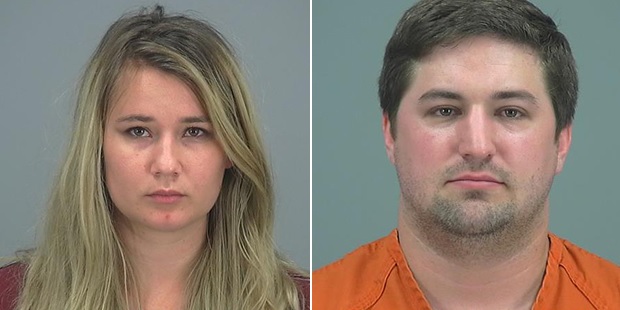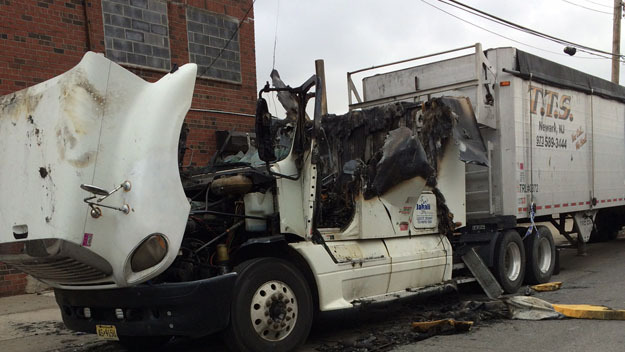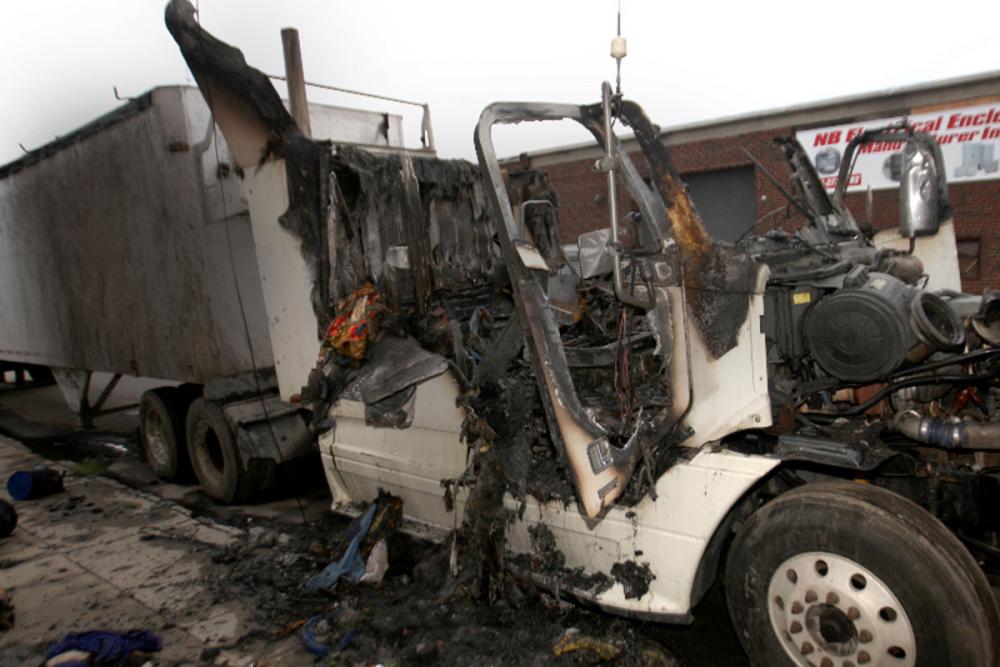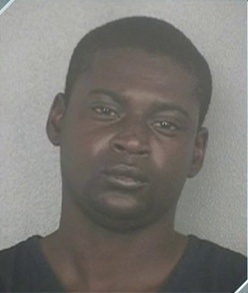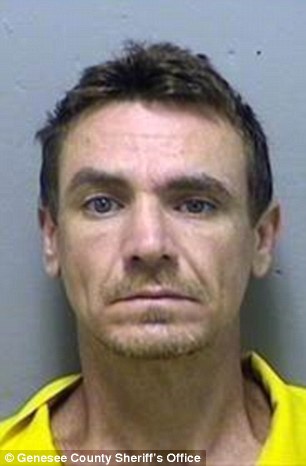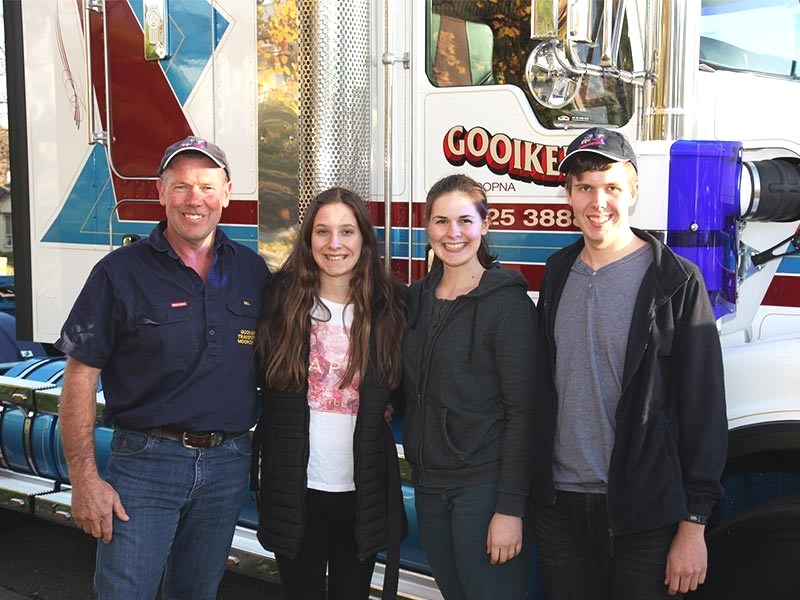
kscarbel2
Moderator-
Posts
17,891 -
Joined
-
Days Won
86
Content Type
Profiles
Forums
Gallery
Events
Blogs
BMT Wiki
Collections
Store
Everything posted by kscarbel2
-
GM will take aim at VW with diesel Chevy Cruze Automotive News / August 2, 2016 Chevrolet will go after Volkswagen’s diesel customers “There are a lot of diesel intenders and diesel-loyal people who are looking for a brand and vehicles to go after,” said Dan Nicholson, General Motors’ vice president for global propulsion systems. “They tend to be more tech savvy than the average customer. And they won’t stop wishing for a diesel. And we’ll go after those customers,” he said on the sidelines of the Center for Automotive Research’s Management Briefing Seminars here. Chevrolet, Nicholson said, will follow through with its plan to launch a new diesel engine in the Chevrolet Cruze. The car is expected to arrive in 2017 and feature a 1.6-liter diesel that is so quiet engineers call it “whisper diesel.” Nicholson said he believes the U.S. market for diesel-powered cars and light trucks is still viable, despite Volkswagen’s diesel emissions scandal. “I think the U.S. is one of the few diesel growth markets on the planet,” he said. “I am very optimistic about the diesel market in the U.S. It has been abandoned by others and we are happy to step in and be the leader. Frankly that’s what we’d like to do,” he said. GM, Nicholson said, is seeing strong demand for the diesel-powered Chevrolet Colorado and GMCCanyon pickups. “We’re selling every one we can make and our sales targets are on track,” he said. VW steps back Last month, Hinrich Woebcken, CEO of Volkswagen Group of America, told Automotive News that VW won’t relaunch “clean diesels” as a core element of its brand identity in the U.S., where VW dominated diesel passenger car sales before being consumed by its nearly yearlong emissions-cheating scandal. He said VW would use diesels where they make sense until at least 2019, but then toughening emissions standards would make the fuel-efficient engine extremely difficult to certify for U.S. sale. Volkswagen halted sales of diesel-powered vehicles last fall after regulators discovered VW used a defeat device to turn off emissions systems during testing. Parent company Volkswagen AG now has set aside nearly $20 billion to pay for legal settlements, fines and vehicle buybacks stemming from the scandal. Criminal investigations are ongoing in the U.S. and Germany. GM engineered the Cruze’s diesel engine at its Turin, Italy, powertrain engineering center. It is expected to develop 136-hp and 275 pounds-feet of torque.
-
US crude drops below $40 a barrel The Financial Times / August 2, 2016 Previously bullish hedge funds turn more negative as inventory of refined products swells US crude hovered near the $40 a barrel mark early on Tuesday, while the global benchmark Brent was at three-month lows as higher output and exports from big producer countries weighed on market sentiment. West Texas Intermediate, the US marker, dropped to as low as $39.82 late on Monday and was just above the $40 level in London on Tuesday. The world’s leading energy bodies have said a rebalancing of supply and demand is well under way, but oil prices remain under pressure while previously bullish hedge funds are turning more negative. Market participants also point to increasing production and exports from Opec countries, just as concerns rise about falling crude demand from refineries as refined products inventories swell. “There was a temporary balance in the oil market. Now supplies that were disrupted have started to resume and the sharp downturn in US supply that was expected to balance the oil market looks shallower,” said Harry Tchilinguirian, global head of commodity markets strategy at BNP Paribas. “There are doubts in the minds of even the most fervent bulls as to when the market fully comes into balance,” he added. Brent reversed all the hefty gains it had early on Monday to finish 0.8 per cent lower at $42.14 - a level it was near early on Tuesday. The price of Brent crude for delivery in October rose to $43.85 a barrel in morning trading, following the expiry of the September contract. Both benchmarks were trading at levels last seen in mid-April and have dropped a fifth from their peak of $51 a barrel in June. A fall of more than 20 per cent is considered to be a bear market. Hedge funds and other money managers added the equivalent of 56m barrels of extra short positions in Brent and WTI futures and options contracts in the week ending July 26. Bullish bets on crude are at their smallest in five months. Bijan Zanganeh, Iran’s oil minister, on Monday said that although he expected supply and demand to even out, the oil market was still “oversupplied,” according to state television. Of all Opec nations, Iran has provided the biggest rise in output as it pumps more oil and seeks a greater export market share after the lifting of western sanctions against its energy sector. Mr Zanganeh said the Iranian government will ratify a new oil contract model this week to make way for international investment into the country’s energy sector. Meanwhile, the head of Libya’s national oil company said on Sunday he welcomed the reopening of ports following a deal between the UN-backed government and a rebel force, saying it would prepare the way for a resumption of its disrupted exports. Mustafa Sanalla said big military, political and legal obstacles remained in Libya, but the national oil company sought to “immediately start technical works, and we will mobilise workers as quickly as possible”. Libya aims to boost exports to 900,000 barrels a day by the end of the year, Mr Sanalla said. Separately, the state oil company for Saudi Arabia — Opec’s largest producer and the world’s top exporter — on Sunday reduced its export prices for Asian customers. It cut the official selling price for the benchmark Arab Light grade for September-loading cargos by $1.30 a barrel to a discount of $1.10 compared with the Oman/Dubai benchmark. That’s the sharpest cut in almost a year, which industry participants took to mean a more aggressive push for market share as it competed with other big producers, from Russia to Iraq and Iran. The price reduction came ahead of an expected pullback in demand in October when Asian refinery maintenance season got under way. In the US, oil companies added drilling rigs for a fifth consecutive week, according to services company Baker Hughes. The data published on Friday showed an increase of three rigs to 374 and made up the biggest monthly jump in more than two years.
-
Phoenix parents abandon toddler son to play Pokemon Go Associated Press / August 1, 2016 An Arizona couple has been charged with child endangerment after leaving their toddler home alone so they could out and play “Pokemon Go”. Pinal County Sheriff’s Office said Brent and Brianne Daley were arrested last week at their San Tan Valley home. They admitted they left the boy sleeping to play the popular location-based interactive smartphone game. At some point the boy exited the home while distraught in temperatures of approximately 95 degrees. A neighbor called authorities Thursday around 10:30 p.m. to report seeing the 2-year-old outside the house crying and trying to get back into the house. The neighbor said the parents didn’t appear to be home. Deputies said after they brought the boy inside — the front door was unlocked — they confirmed he lived there based on photos around the house. Deputies called a phone number they found and a man answered. When a deputy told the man they had found an abandoned child, authorities said the man answered, “Whatever” and hung up. The Daleys returned an hour later and were taken into custody. They told police they had gone to gas up the car and then drove around the neighborhood playing the game. The Arizona Department of Child Safety took over care of the boy, who was barefoot and wearing a diaper and T-shirt when found. .
-
anyone know the cardone number for this water pump
kscarbel2 replied to gumbiegumbie's topic in Engine and Transmission
Why don't you buy a Mack remanufactured water pump that provides you with OEM quality and a nationwide one-year unlimited mileage warranty ? -
Associated Press / July 31, 2016 At least seven semi-trailer trucks were set ablaze early Sunday in East New York, Brooklyn. Seventeen private trash trucks have been set ablaze in Brooklyn in the past two months. Police investigators say an “internal beef’’ may be behind the arsons. The windows of the 18-wheeler cabs torched in East New York on Sunday looked like they were smashed in by molotov cocktails, which then burst into flames, leaving at least one truck a bombed-out, smoldering metal shell. A witness on Stanley Avenue saw one arsonist arrive in an unmarked truck around 3 a.m. “A man got out of a regular box truck, out of the passenger side. He came out of the truck, he walked right here to the passenger side of the tractor trailer, busted the windows, and next thing I know there was an explosion.” “The guy got out, he was short, I’d say 5’7”, 5’9”; kind of chubby. He had on all black; a black hoodie.” Nearly all the trucks were garbage trucks. Five of the seven have markings for TTS Trucking Company in Newark. They are parked on blocks typically lined with trucks overnight, and some believe specific trucks were targeted. “It was not random at all,” a witness said. “Someone wants to close these trailers down.” Many drivers often sleep in the cabs where all the fires were set. Burned mattresses were still on the ground late Sunday. Some local drivers said they wouldn’t be sleeping too soundly Sunday night. “I’m probably not going to get much sleep if I decide to stay here after seeing that,” said truck driver Roberto Lopez. “Usually when you come to a city like these, people knock on the door and I ignore it,” said truck driver T.J. Wyatt. “Now I won’t.” Police said late Sunday that it was still unclear whether the fires were the work of a possible arsonist. They were still investigating if there was any criminality involved. One truck owner said it was the second time his vehicles have been torched in the neighborhood. “It’s crazy because there are security cameras on all the buildings,” said Ricardo Caballan, whose company is called Jahali. Police said five of the independently owned tractor-trailers targeted Sunday were hired by TTS Trucking of Newark, New Jersey to haul waste from the city to Pennsylvania. The other two trucks had “East Trucking’’ written on them. The first explosion occurred at 2:30 a.m., and police say within an hour, six more cabs parked at various streets in East New York were ablaze. The trucks were parked at five places: Essex Street and Stanley Avenue; Shepherd Street and Stanley Avenue; Linwood Street and Wortman Avenue; Linwood Street and Stanley Avenue and Chestnut Street and Atlantic Avenue. .
-
MAN Significantly Improves Profit MAN Truck & Bus Press Release / July 29, 2016 MAN Truck & Bus boosts profit in the first half of 2016 — operating profit before special items more than doubled Munich-based commercial vehicle and engineering player MAN has seen 2016 off to a successful start, benefiting in particular from its strong position on the European commercial vehicles market as it continues to recover. The MAN Group’s order intake was €7.4 billion and sales revenue €6.4 billion in the first six months of 2016. In the first half of 2016, the MAN Group’s operating return on sales increased to 3.7%, after 0.2% in the prior-year period. The MAN Group’s operating profit amounted to €236 million in the first six months of 2016 (previous year: €15 million). “This is mainly attributable to a considerably improved operating profit at MAN Truck & Bus,” said Joachim Drees, Chief Executive Officer of MAN SE. “Apart from higher volumes and improved margins, the future growth program launched in the previous year also had a significant effect.” Order intake at MAN Truck & Bus rose year-on-year to €5,250 million in the first half of 2016 with sales revenue at €4,443 million. Order intake and unit sales grew in line with sales revenue. At €268 million, operating profit in the first half of 2016 was significantly higher than the prior-year figure before special items (€121 million). This corresponds to an operating return on sales of 6.0 % (previous year: 2.8 %). The program to strengthen the Company in a competitive market environment comprises far-reaching initiatives to increase profitability and cut costs, as well as to make production more flexible. Key aspects of the program include restructuring the truck production sites and streamlining all administrative areas. This will also include cutting product costs and lifting sales performance. While the Commercial Vehicles business area saw significant growth in the European commercial vehicles market on the back of the economic upturn, the ongoing recession and political uncertainties in Brazil once again led to a considerable market decline as against the previous year. MAN Latin America posted a further decrease in demand in the first half of 2016. The company sold 10,131 vehicles, down 19% as against the prior-year period. Sales revenue declined to €398 million. MAN Latin America is implementing an extensive program to strengthen the company in a competitive market environment with the aim of systematically improving its earnings quality. In the Power Engineering business area, the situation in the marine and turbomachinery markets deteriorated further while the energy generation market remained at a low but stable level. Overall, this led to a decrease in order intake at MAN Diesel & Turbo despite a year-on-year increase in orders received by the Power Plants strategic business unit. MAN Diesel & Turbo recorded an operating profit of €69 million in the first six months under review and thus an operating return on sales of 4.7%. The year-on-year deterioration in operating profit was primarily due to the decline in sales volumes, significant pressure on margins in the new construction business, and decreased capacity utilization. Renk posted higher order intake overall than in the previous year following positive growth in the Special Gear Units and Vehicle Transmissions strategic business units. It generated an operating profit of €33 million in the period under review. As a result, Renk’s operating return on sales for the first half of 2016 was 14.6%. All in all, the MAN Group’s profit before tax amounted to €156 million in the first six months. The profit after tax was €16 million. Net cash provided by operating activities amounted to €406 million in the first six months, a significant year-on-year improvement. The Executive Board of MAN SE expects a slight year-on-year decline in the MAN Group’s sales revenue. Operating profit and the operating return on sales will be significantly higher than the 2015 levels. 2016 MAN Half-Yearly Financial Report - http://www.corporate.man.eu/man/media/en/content_medien/doc/global_corporate_website_1/investor_relations_1/qb/hjb_2016/2016_hjbericht.pdf
-
Volkswagen would back U.S. trucks deal, despite dieselgate
kscarbel2 replied to kscarbel2's topic in Trucking News
The Volvo brand US market share continues to grow overall, whereas Mack brand market share remains stagnant. As that gap continues to widen, the reason for Mack's existence continues to weaken. Buying Mack, like White, Autocar and GMC, buying up that market share, was always for Volvo a means to an end. It was all about business....they have no love/passion for Mack as Americans do. Volvo has never understood the meaning of "Mack", as we view it, nor cared to. The goal has always been to climb the mountain, conquering and absorbing along the way, to reach the peak and battle Daimler for the position as the world's largest truckmaker by volume. (Now VW has entered the competition) We all recall the Volvo brand, for years, being far behind Mack in sales. But nowadays, Volvo is clearly out ahead of the Mack brand by a considerable distance. Volvo couldn't be more thrilled. And the Volvo/Mack dealers, who for years never promoted Volvo, are actually pushing it now. Failing to compete in the long haul segment while being clobbered in vocational by Kenworth, and supported by incompetent corporate leadership who have distributor principals disgusted, the Mack brand is no longer the "center of the world" at Volvo/Mack distributors. ----------------------------------------------------------------------------------------------------------------------------------------------------- Full Year 2014 Volvo brand global (overall) truck sales 117,194 units Mack brand global (overall) truck sales 25,644 Volvo brand North America truck sales 33,800 Mack brand North America truck sales 23,634 Full Year 2015 Volvo brand global (overall) truck sales 113,066 units Mack brand global (overall) truck sales 27,411 Volvo brand North America truck sales 38,890 Mack brand North America truck sales 25,302 Q1 2016 Volvo brand global (overall) truck sales 24,315 units Mack brand global (overall) truck sales 5,176 Volvo brand North America truck sales 5,797 Mack brand North America truck sales 4,843 Q2 2016 Volvo brand global (overall) truck sales 28,255 units Mack brand global (overall) truck sales 5,588 Volvo brand North America truck sales 6,786 Mack brand North America truck sales 5,192 -
Paul bought his land in the right way, at the right time, and in the right place. I was never in a position to do that. But I was in a position to invest in Asia, the world's last growth region (again, Latin America is too dangerous). The stock market is a scam, pure and simple. But there are moments when even the common man can partake in opportunities. You have to be unafraid to get in at the market bottom, rather than wait until its rising again. BMT Investors voted to get into Navistar (NAV) in January at $6 (it bottomed at $5.78), and look where it is today. I like the idea of Americans being able to "opt out" of social security. As you said, I don't want to finance (support) the ocean of "slacks" living off the system.
-
‘They took too damn long’: Inside the police response to the Orlando shooting The Washington Post / August 1, 2016 Within minutes of the attack, police entered Pulse nightclub and outnumbered Omar Mateen. It would be nearly three more hours before he was killed. The police department's chief defended the actions of officers. When Omar Mateen finished pumping bullets into dozens of people sprawled on the dance floor inside the Pulse nightclub on June 12, he walked toward the bathrooms, where many patrons had hidden. It was just minutes after Orlando police were called about the gunfire, and law enforcement officers began descending on the club. Four of them entered the building through one patio, while six others shot out a window to get inside. Among the 10 officers who went into Pulse, some had powerful military-style rifles and one had a shield. At least two had tactical experience. Police fired at Mateen when he popped his head out of one of the bathrooms. The shooter was outgunned and outnumbered. But then, police decided not to pursue him. This account, based on interviews with law enforcement officials and witnesses, as well as public records, provides the most complete picture yet of the law enforcement response and Mateen’s movements inside the club on the night of the attack. The new details raise questions about how police and fire agencies responded to what became the deadliest mass shooting in modern U.S. history — and how the attack turned into a hostage standoff that lasted nearly three hours. The decision not to follow Mateen into the bathroom proved critical. Because Mateen was not subdued or killed sooner, wounded victims remained trapped inside the bathroom for hours, pleading for the police to rescue them. Emergency medical personnel did not enter the club to treat victims, because it was deemed too dangerous. And during the final standoff, in which police initially failed to breach the club wall and struggled to make entry, Mateen apparently shot more people, according to witnesses. At least five people who were alive in the bathrooms when the standoff began ultimately died at the club. Three of these people — Deonka Deidra Drayton, Eddie Justice and Alejandro Barrios Martinez — sent text messages from inside the club’s bathrooms and were later among the dead. [Graphic: The lives lost in Orlando] Witnesses in the women’s bathroom said Mateen killed at least three people during the final moments of the standoff, opening fire as SWAT officers were moving to breach the walls. “They took too damn long for me,” said Tiara Parker, 21, who was inside the bathroom. “If they had moved faster, they would have gotten us out of there and everybody could have possibly lived.” In a lengthy interview, Orlando Police Chief John Mina defended the actions of officers inside the club and the rationale for not ending the attack sooner. The reason police did not pursue the shooter immediately, Mina said, was that Mateen stopped shooting after he entered the bathroom and he had hostages. “He went from an active shooter to a barricaded gunman,” Mina said. “If he had continued shooting, our officers would have went in there.” How Orlando police responded will be studied closely as other departments across the country try to prepare their officers for the next mass shooting. The Justice Department, at the Orlando Police Department’s request, is reviewing the law enforcement response. Similar reviews have been launched after other attacks at movie theaters, schools and government installations. The examination of how authorities responded to the Pulse shooting will join a grim catalogue of assessments that have sought to learn lessons from attacks in Aurora, Colo., at the Washington Navy Yard and at Virginia Tech. In each of those mass shootings, officials found that they could do things better the next time. “The highest priority is to eliminate the threat,” said Dan Oates, who was the police chief in Aurora when a gunman opened fire in a movie theater, killing 12 and injuring scores more. Oates declined to comment on the Orlando shooting and the response there. He added: “If the best information is the shooter is on the fourth floor, you get to the fourth floor. If you run into the bad guy, you better be ready to deal with it.” Crucial minutes The bloodshed at Pulse unfolded in a matter of minutes. At 2:02 a.m., Mateen entered the club with his semiautomatic rifle at the ready and started shooting immediately, according to The Washington Post’s timeline constructed from interviews and public records. He fired repeatedly in the main room of the club, then moved toward the back room, continuing to shoot. Clubgoers went running for hiding places and exits, jumping over the bodies of those already hit. Some played dead. Mateen was able to move around the space quickly. Not including an outdoor patio, the club covers less than 5,000 square feet. Moments later, he returned to the main room. He fired at wounded people lying on the dance floor and reloaded his magazine. Then he returned to the back room, shooting victims again. For a third time, he walked into the main room, changing magazines and firing at more people. At 2:07 a.m., he headed to the restrooms and continued to shoot. Angel Santiago described running directly into one of the bathrooms with a friend after the shooting started. Santiago estimated that there were about 15 to 20 people in there. Mateen entered shortly after and started shooting. Parker said that when Mateen entered the women’s room, his rifle jammed, so he used his handgun. By 2:10 a.m., at least 10 officers had entered the club. The first moments were filled with confusion as the police made their way through the dark club. One who entered through the east patio said he heard shots, while another said he didn’t hear any. A group of six officers, including Officer Brandon Cornwell, had entered the club by busting out a window. Cornwell said Mateen “was actively shooting.” Orlando officer Michael Ragsdale later said in his narrative to police that as he entered the back bar area from the patio, he saw two other officers shooting down a hallway. “At that time I could not see what they were shooting at,” he said. There seemed to be a lull in gunfire, Mina said, and then Mateen apparently began shooting again, revealing to officers his location in the club. Mina said he thinks that officers shot at Mateen about 2:17 a.m., the same time that emergency dispatchers received some of the last reports of gunfire. It was not clear whether Mateen fired at police during this encounter. Mina said that once Mateen was barricaded in the bathroom, the shooting stopped, so police decided to hold their positions. “If there had been additional shots, [police] would have heard,” Mina said. “They were literally feet from the bathroom.” By almost 2:18 a.m., police seemed to have control of the club’s main room, according to publicly released documents and interviews. For the next three hours, though, a terrifying scene unfolded in the women’s restroom as clubgoers, some of them suffering from multiple gunshot wounds, were trapped with Mateen. One victim, 18-year-old Akyra Murray, Parker’s cousin, described losing feeling in her arm. Murray, who managed to call 911 from the bathroom, later told a dispatcher at 2:36 a.m. that she was losing her eyesight and feeling in her body. [‘It was just complete chaos’: Orlando survivors on the struggle to stay alive] In another exchange, a caller said “people are bleeding out in the bathroom.” At 2:35 a.m., another caller described “everyone in the bathroom groaning in pain.” At 2:39 a.m., Justice texted his mother: “I am gonna die.” Meanwhile, Mateen was making contact with 911 and police. In a 2:35 a.m. call to an emergency dispatcher, he said he was the shooter in Orlando and pledged allegiance to the leader of the Islamic State. In three other calls scattered over the next hour, each lasting between three and 16 minutes, Mateen talked with police negotiators. He said there was a vehicle outside the club with bombs and that he had a vest — the kind they “used in France.” “In the next few days, you’re going to see more of this type of action going on,” he said to a negotiator. While he was holed up in the bathroom, Mateen searched online on his phone for mentions of the shooting, according to law enforcement officials. Police continued trying to free people from the club. At 4:21 a.m., officers pulled out an air-conditioning unit from a dressing-room window to let victims evacuate. Mina said eight people who had been hiding inside were saved. As victims escaped through the window, they told officers that Mateen said he would put bomb vests on four people within 15 minutes. Once they learned this, police decided they had to make a move, despite the potential consequences. At 5:02 a.m., the Orlando police SWAT team and a hazardous- device team from the Orange County Sheriff’s Office began breaching a wall of the club. They tried to use explosives to bring down a bathroom wall so they could enter and rescue victims, but that didn’t work. The failed attempt probably signaled to Mateen that police were coming. Minutes passed as officers continued trying to ram an opening into the club. During that time, witnesses said, Mateen started killing people inside the bathroom. “We were already at great risk, but . . . they made it worse,” Parker said. “They put us at more risk.” Parker said she saw Mateen kill at least two people, possibly a third, in the women’s bathroom. Based on photos of the victims that were published after the shooting, she identified two of the people as Deonka Drayton and Tevin Eugene Crosby. Patience Carter, a survivor who said she fled and hid in a bathroom stall with Parker, said that when police ordered people away from the wall as they prepared to breach, Mateen appeared to shoot several more people. [‘How did I walk away alive?’ The Orlando shooting through a survivor’s eyes.] Using a BearCat armored vehicle, authorities punched a hole between the two bathrooms, but they had picked the wrong spot. In a third attempt to get in, the tactical personnel created another hole in the men’s room and survivors started streaming out. Mateen emerged from one of the openings and fired at the SWAT team. Parker said the fusillade was so intense she could feel the heat from the bullets flying past her. “I was getting burned up by the bullets bouncing from everywhere,” Parker said At 5:14 a.m., police radio communications indicated that shots were fired. One minute later, those radio calls said that police had shot at Mateen and he was down. When it was over, Mateen was dead. So was Murray, the 18-year-old who had called 911 saying she was losing feeling in her body. She was among the dozen or so dead in the bathrooms. Officials found no explosives or suicide vests. Mina said 15 hostages held in one bathroom were freed and three to five escaped from the other. How to stop an active shooter In the aftermath of the shooting, law enforcement officials defended their actions. A. Lee Bentley III, the U.S. attorney for the Middle District of Florida, has said that the officers responding “should not be second-guessed.” Mina said this was not a typical active-shooter situation. If Mateen had been in the open, he said, the officers would have shot at or arrested him. Instead, Mateen was already in the bathroom when he was first spotted. “Officers followed their training in responding to active-shooter incidents,” Mina said. Police say that during the standoff, they were continuously taking victims out of the club from the main room and bringing them outside to get medical help. [A Marine’s military training helped him save dozens from Orlando gunman] Paramedics responding to the shooting, however, never came within 100 yards of the building during the attack and standoff that followed. They were “not equipped to handle an active shooter,” according to Orlando Fire Department District Chief Bryan Davis, who served as incident commander that night. Mina said that if this had been a college campus or mall, emergency fire and rescue personnel would have come into the building. But this was a relatively small building that police cleared quickly. “There wasn’t a need” for paramedics to enter the building, he said. Officers “were easily able to get people to aid.” After other shooting attacks in places such as Aurora and Colorado’s Columbine High School, officials and experts have emphasized the importance of pursuing the attacker or attackers as quickly as possible. “In light of experience from multiple victim shooting incidents in the past two decades, widely accepted police strategy is to attempt to quickly neutralize an active shooter — go to the shooter, and do not wait for special teams or special equipment or a large force for attack,” concluded an independent report analyzing the 2012 Aurora movie theater shooting at the city’s request. “The longer the perpetrator is left to shoot, the more people may be killed or injured.” The Orlando police posted on their website last December — after two attackers who pledged loyalty to the Islamic State killed 14 people in San Bernardino, Calif. — that they had held regular training for active-shooter situations since 2000. “Since law enforcement’s focus is always to contain and stop an active shooter, in 2014, OPD modified its training to integrate the Orlando Fire Department,” the statement said. “In this new training, which was taught in scenario-based exercises starting last spring and summer, rescue personnel respond to what we call ‘warm zones’ (where contact with the shooter or shooters is not likely to occur) so they can quickly enter, locate, treat, and evacuate casualties.” Authorities are continuing to investigate the handling of the shooting. Mina said officials do not know how many of the victims who were alive during the prolonged standoff later died in the bathrooms or how many had survivable gunshot wounds. The Florida Department of Law Enforcement is investigating the officers who discharged their weapons; the agency declined to say specifically when during the event any of them fired shots, saying such information would be released when the investigation concludes. During the initial encounters with Mateen and at the end of the three-hour standoff that followed, authorities say, 14 officers fired their weapons. Orlando police say 11 of their officers fired, seven of them SWAT team members who fired at the end of the confrontation, killing Mateen. Three Orange County sheriff’s deputies also fired. Mina said he did not know whether law enforcement had inadvertently killed any of the clubgoers. Chris Voss, a former FBI SWAT team member and hostage negotiator, said that the decision not to follow Mateen into the bathroom was a gamble but one that was understandable. “Cops are paid to take risks but not stupid risks,” he said. “This is not military combat where there are acceptable casualties on both sides. Law enforcement doesn’t have that conversation. No casualties are acceptable.” Voss said that “buying time increases the likelihood of a successful assault” and can often save more lives. The rule for law enforcement, he said, is, “Don’t make things worse.” “We don’t want cops to be cowboys,” Voss said. “I see cops going down and things being worse. Play the odds and step back.” Mina said that there will be lessons learned but that his officers did the best they could with the information they had at the time. “I have no regrets in the decisions that my officers and commanders on the ground made, and I have no regret with the decision I made, either,” he said.
-
Volkswagen would back U.S. trucks deal, despite dieselgate
kscarbel2 replied to kscarbel2's topic in Trucking News
The Swedish government would like to see D11 and D13 engine production return to Sweden. And for Gothenburg, Sweden-based Volvo, relocating that engine production back to Sweden would be a very politically correct thing to do. The government would smother Volvo with financial incentives. Volvo engine production is NOT limited to the former Mack Trucks facility in Hagerstown, Maryland. In addition, Volvo produces engines in: Skövde, Sweden Euro-6 D13 and global D16 Lyon-Venissieux, France Euro-6 D5, D8, D9 and D11) Curitiba, Brazil Euro-5 D11 and D13 Pithampur, India Euro-3 and Euro-4 D5 and D8 Ageo, Japan GH5, GH7, GH8, GH11, GH13 (Nissan Diesel-developed D5/D8 and rebadged D11/D13) Volvo could also negotiate to produce engines at the 55/45 Dongfeng-Volvo joint venture, which produces the Renault dCi 11. And, as Deutz's largest shareholder at 25%, one can say Volvo indirectly builds engines in Cologne and Ulm, Germany, Buenos Aires, Argentina and the Deutz (Dalian) Engine Co. 50/50 joint venture with FAW in China. -
Volkswagen would back U.S. trucks deal, despite dieselgate
kscarbel2 replied to kscarbel2's topic in Trucking News
Volvo is in serious financial straights right now. Aside from their US truck market being in the toilet owing more to incompetent management than macroeconomics, the money-losing Volvo Construction Equipment unit is pulling them under. The board is of a mind to sell, but with the market down, they wouldn't get much for it. -
Volkswagen would back U.S. trucks deal, despite dieselgate
kscarbel2 replied to kscarbel2's topic in Trucking News
Despite the North American market slowdown, Navistar is getting airborne again. At the same time, look at Volvo, floundering with new excuses every month as they lay off more and more U.S. workers. The two "American" truckmakers, Paccar and Navistar, haven't laid off anyone. Paccar is doing great. -
Your typical 401K scenario is a scam. The mutual funds you are limited to choose from are generally underachievers. The mutual funds provide various forms of kickbacks to the 401K program provider, and sometimes to the company. Whether or not you should even waste your time with a 401K that grows slow as molasses......if it in fact does grow, depends on your company's contribution. Land remains a good investment, in the right place and at the right time. As for mutual funds, the US and European markets (companies) have long ago peaked. And, the major financial institutions there are, frankly speaking, corrupt. Latin America is too volatile. The only global region that is still immature, with many years of profitable growth ahead for investors, is Asia (that includes India).
-
http://www.bigmacktrucks.com/topic/35819-dtna-unveils-new-detroit-branded-powertrain/#comment-247126
-
"People should and do trust me" - Hillary Clinton
kscarbel2 replied to kscarbel2's topic in Odds and Ends
The Clinton Foundation, State and Kremlin Connections Peter Schweizer, The Wall Street Journal / July 31, 2016 Why did Hillary’s State Department urge U.S. investors to fund Russian research for military uses? Hillary Clinton touts her tenure as secretary of state as a time of hardheaded realism and “commercial diplomacy” that advanced American national and commercial interests. But her handling of a major technology transfer initiative at the heart of Washington’s effort to “reset” relations with Russia raises serious questions about her record. Far from enhancing American national interests, Mrs. Clinton’s efforts in this area may have substantially undermined U.S. national security. Consider Skolkovo, an “innovation city” of 30,000 people on the outskirts of Moscow, billed as Russia’s version of Silicon Valley—and a core piece of Mrs. Clinton’s quarterbacking of the Russian reset. Following his 2009 visit to Moscow, President Obama announced the creation of the U.S.-Russia Bilateral Presidential Commission. Mrs. Clinton as secretary of state directed the American side, and Foreign Minister Sergei Lavrov represented the Russians. The stated goal at the time: “identifying areas of cooperation and pursuing joint projects and actions that strengthen strategic stability, international security, economic well-being, and the development of ties between the Russian and American people.” The Kremlin committed $5 billion over three years to fund Skolkovo. Mrs. Clinton’s State Department worked aggressively to attract U.S. investment partners and helped the Russian State Investment Fund, Rusnano, identify American tech companies worthy of Russian investment. Rusnano, which a scientific adviser to President Vladimir Putin called “Putin’s child,” was created in 2007 and relies entirely on Russian state funding. What could possibly go wrong? Soon, dozens of U.S. tech firms, including top Clinton Foundation donors like Google, Intel and Cisco, made major financial contributions to Skolkovo, with Cisco committing a cool $1 billion. In May 2010, the State Department facilitated a Moscow visit by 22 of the biggest names in U.S. venture capital—and weeks later the first memorandums of understanding were signed by Skolkovo and American companies. By 2012 the vice president of the Skolkovo Foundation, Conor Lenihan—who had previously partnered with the Clinton Foundation—recorded that Skolkovo had assembled 28 Russian, American and European “Key Partners.” Of the 28 “partners,” 17, or 60%, have made financial commitments to the Clinton Foundation, totaling tens of millions of dollars, or sponsored speeches by Bill Clinton. Russians tied to Skolkovo also flowed funds to the Clinton Foundation. Andrey Vavilov, the chairman of SuperOx, which is part of Skolkovo’s nuclear-research cluster, donated between $10,000 and $25,000 (donations are reported in ranges, not exact amounts) to the Clinton’s family charity. Skolkovo Foundation chief and billionaire Putin confidant Viktor Vekselberg also gave to the Clinton Foundation through his company, Renova Group. Amid all the sloshing of Russia rubles and American dollars, however, the state-of-the-art technological research coming out of Skolkovo raised alarms among U.S. military experts and federal law-enforcement officials. Research conducted in 2012 on Skolkovo by the U.S. Army Foreign Military Studies Program at Fort Leavenworth declared that the purpose of Skolkovo was to serve as a “vehicle for world-wide technology transfer to Russia in the areas of information technology, biomedicine, energy, satellite and space technology, and nuclear technology.” Moreover, the report said: “the Skolkovo Foundation has, in fact, been involved in defense-related activities since December 2011, when it approved the first weapons-related project—the development of a hypersonic cruise missile engine. . . . Not all of the center’s efforts are civilian in nature.” Technology can have multiple uses—civilian and military. But in 2014 the Boston Business Journal ran an op-ed placed by the FBI, and noted that the agency had sent warnings to technology and other companies approached by Russian venture-capital firms. The op-ed—under the byline of Lucia Ziobro, an assistant special agent at the FBI’s Boston office—said that “The FBI believes the true motives of the Russian partners, who are often funded by their government, is to gain access to classified, sensitive, and emerging technology from the companies.” Ms. Ziobro also wrote that “The [Skolkovo] foundation may be a means for the Russian government to access our nation’s sensitive or classified research development facilities and dual-use technologies with military and commercial application.” To anyone who was paying attention, the FBI’s warnings should have come as little surprise. A State Department cable sent to then-Secretary Clinton (and obtained via WikiLeaks) mentioned possible “dual use and export control concerns” related to research and development technology ventures with Moscow. And in its own promotional literature Skolkovo heralded the success of its development of the Atlant hybrid airship. “Particularly noteworthy is Atlant’s ability to deliver military cargoes,” boasts the Made in Skolkovo publication: “The introduction of this unique vehicle is fully consistent with the concept of creating a mobile army and opens up new possibilities for mobile use of the means of radar surveillance, air and missile defense, and delivery of airborne troops.” Even if it could be proven that these tens of millions of dollars in Clinton Foundation donations by Skolkovo’s key partners played no role in the Clinton State Department’s missing or ignoring obvious red flags about the Russian enterprise, the perception would still be problematic. (Neither the Clinton campaign nor the Clinton Foundation responded to requests for comment.) What is known is that the State Department recruited and facilitated the commitment of billions of American dollars in the creation of a Russian “Silicon Valley” whose technological innovations include Russian hypersonic cruise-missile engines, radar surveillance equipment, and vehicles capable of delivering airborne Russian troops. A Russian reset, indeed. Mr. Schweizer is president of the Government Accountability Institute and the author of “ Clinton Cash.” A larger report on the subject of this article is available at Cronyism.com. -
‘No kid deserves that’: Police say barefoot child was forced outside on 110-degree day as punishment ( Cultural decay and declining standards of behavior in America ) The Washington Post / July 31, 2016 On July 12, the high in Phoenix was 110 degrees. That’s not quite hot enough to effectively fry an egg on the street, but it is hot enough to severely burn the bottom of someone’s feet. Police said that’s exactly what happened when Mark Simmons decided to punish his 6-year-old son by “taking the boy outside and making him stand barefoot on the ground in the backyard as punishment,” according to court records cited by ABC affiliate KNXV-TV. Simmons also used a belt to whip the child. On camera, KNXV-TV reporter Sonu Wasu demonstrated that she could barely endure the blazing Phoenix concrete for more than a second or two. Police say Simmons’s child was forced to stand outside for about 10 minutes. The child told police that his stepmother, identified as 30-year-old Sarah Simmons, was home at the time and aware of the brutal punishment. Sarah Simmons is accused of cutting blistered flaps from the bottom of her stepson’s feet. Simmons told the child that “if he didn’t stop crying, he would go back outside and burn worse.” Simmons didn’t initially seek medical treatment for the boy because she was “afraid the children in the house would be taken away.” Simmons instead bandaged the boy’s feet and used a spray medication to treat the pain. Simmons had “approximately 30 prior reports with the Department of Child Safety.” “It was only when the victim’s wounds became infected and the top of his feet became red that the couple decided to call the fire department for medical care.” Authorities found out about the burns when child-crimes detectives with the Phoenix Police Department were called to the Maricopa County hospital’s burn center on July 12. Mark Simmons was arrested and charged with two counts of child abuse the next day. Sarah Simmons was arrested Thursday and charged with intent to commit child abuse. Video - http://www.abc15.com/news/crime/phoenix-pd-parents-force-6-year-old-to-stand-outside-barefoot-causing-sever-burns-to-his-feet .
-
Florida father shoots 1-year-old daughter and son ( Cultural decay and declining standards of behavior in America ) Associated Press / July 27, 2016 A 7-year-old boy was clinging to life Wednesday evening after his father shot him and killed his younger sister before turning the gun on himself in Dania Beach. What began as an argument between parents led to the murder-suicide in which Timothy Hollis, 32, killed Kalila Hollis, 1, and critically injured Timothy Hollis Jr. before taking his own life, the Broward Sheriff's Office said. The bodies of Hollis and his daughter were found on the sidewalk near the intersection of West Dania Beach Boulevard and Southwest Eighth Avenue early Wednesday. Timothy Hollis Jr. was found in the street with life-threatening injuries. He was taken to Joe DiMaggio Children's Hospital in Hollywood. The shootings took place early Wednesday around 1:30 a.m. .
-
Tennessee mother murders her 4 children ( Cultural decay and declining standards of behavior in America ) Associated Press / July 3, 2016 A Memphis mother, Shanynthia Gardner, has been charged with first- degree murder after stabbing her four children to death in their home. After killing the children, she phoned the father of the deceased children, Martin Gardner, and admitted to killing four of their children who police say were 4,3,2 and 6-months-old. Earlier that day, first responders received a call to the home from a neighbor. They said Gardner’s 7-year-old had come running out of the house, screaming for help. His sister, he said, had been stabbed. Authorities witnessed the mother come out of the home with a large knife in her hand, then re-enter. In the living room, first responders discovered 6-month-old Yahzi Gardner sitting in her baby carrier and her sister, 3-year-old Sya Gardner, lying next to her dead. Both had severe lacerations to their throats [the mother slit the throats of her 3 daughters and 1 son]. Four-year-old Tallen Gardner and 2-year-old Sahvi Gardner were found in a bedroom. Tallen was on the floor while his little sister was on the bed. They had the same wounds as their siblings. Gardner reportedly also had cuts to her neck and wrists. A knife with blood on it was taken into evidence. On Saturday, Gardner was charged with four counts of aggravated child abuse-endangerment, four counts of aggravated child abuse, four counts of aggravated child abuse-neglect, and four counts of first- degree murder. .
-
Man, mother of two children killed in set fire charged with murder ( Cultural decay and declining standards of behavior in America ) Michigan Live / June 14, 2016 Two people will face murder charges after a set fire claimed the lives of three children, including a four-year-old boy who was locked in his bedroom with a padlock. Rodney Dale King Jr., 40, of Burton faces three counts of felony murder, punishable by life without parole; and a count of first-degree arson, punishable by life with the possibility of parole. Erica Marie Starkey, 39, the mother of 4-year-old Kaydon Hull and 13-year-old Onyah Starkey who died in the fire, faces a total of 11 counts: Felony murder, punishable by life without parole Two counts of second-degree murder, punishable by life in prison with the possibility of parole Three counts of second-degree child abuse, punishable by up to 10 years imprisonment Three counts of unlawful imprisonment, punishable by up to 15 years Two counts of killing an animal – Leyton said two dogs died in the fire – punishable by up to four years. Brianna Beaushaw, 14, who was friends with Onyah Starkey and was spending the night at the home the night of the fire also died Sunday, June 12, from injuries sustained in the blaze. Starkey and King were expected to be arraigned on the charges Tuesday afternoon, June 14, according to Genesee County Prosecutor David Leyton. During a press conference Tuesday morning, June 14, Leyton described how authorities believe the night unfolded – including that evidence showed the 4-year-old tried to escape, but couldn't because he was padlocked in his room. Leyton also said one of the children called 911. Here's a timeline of what authorities say happened early Friday morning, June 10: 3 a.m. – King was walking home from a bar and encountered Erica Starkey on the street. They met up, agreed to go to Starkey's home at 643 Vermilya and do crack-cocaine. 3:30 a.m. – They left that home around 3:30 a.m. in an attempt to find more drugs. 3:45 a.m. – Starkey and King went back to Starkey's home, where the three children slept. 4 a.m. – King gave Starkey money to buy additional crack-cocaine. She left to find the cocaine, and King falls asleep on the couch. 5:50 a.m. – King wakes up, and finds that Starkey still has not returned. Authorities believe she went to another home, did more drugs and some drinking. She never returned. King believed Starkey stole the money and had no intentions of returning with drugs. Angry, he sets the couch on fire, unaware three children were sleeping in the home, and leaves. 6:05 a.m. – 911 is called. The recording sounds like a child inside the home and there are clearly smoke alarms going off in the background. 6:14 a.m. – The Flint Fire Department arrives on scene. The three children are located within the house and rushed to Hurley Medical Center, where Hull and Starkey were pronounced dead the same day. Beaushaw died Sunday, June 12. .
-
Arizona mother murders her 3 children ( Cultural decay and declining standards of behavior in America ) Associated Press / June 3, 2016 A Phoenix woman killed her three sons and partially dismembered their bodies before stabbing herself in the neck and abdomen, police said Thursday. Octavia Rogers, 29, was in critical condition at a local hospital and is expected to face charges. Police found the bodies of Jaikare Rahaman, 8; Jeremiah Adams, 5; and Avery Robinson, 2 months, inside an upstairs closet. Police spokesman Sgt. Trent Crump said the youngest boy's body was in a suitcase. All the children has suffered multiple stab wounds. Police were called to the house early Thursday by Rogers' brother, who became concerned after she talked to him about religion and said that she had found "the answer". The brother said Rogers then locked him out of the house. After forcing his way in, the brother found Rogers bleeding in the bathtub, where she also attempted to drown herself. When first responders arrived at the house, Rogers lied, claiming her children were staying with a relative. A source told ABC15 the mother was on Spice at the time of the killings. The drug, known as synthetic marijuana, can have psychotic effects on some users, according to the National Institute on Drug Abuse. Synthetic marijuana contains man-made chemicals that act on the same cell receptors in the brain as THC does in natural marijuana. Researchers have found instances in which chemicals in synthetic marijuana can bind much more strongly to cell receptors than THC does in marijuana that is grown - producing stronger effects. These effects could be anything from an elevated mood and feeling of relaxation to psychotic effects such as extreme anxiety, confusion, paranoia and even hallucinations, according to the National Institute of Drug Abuse. Arizona child welfare officials had previous contact with the family. The State Child Safety Department said investigators could not locate the family back in 2010 to check reports of a boy with a small abrasion on his forehead. They investigated cases in 2011 and 2016 involving marijuana allegations in which they found no legal grounds to take the children into emergency care. One allegation was substantiated, and the other was not. The substantiated allegation accused the mother of giving birth to a baby exposed to marijuana, but investigators found the children to be safe. In 2006, Rogers had an order of protection filed against her for pushing her mother after Rogers was told to move out. Her mother wanted her to take part in domestic violence counseling. .
-
Owner/Driver / July 31. 2016 Taking his children to the Alexandra show, Bill Gooiker showed off his new SAR Bill Gooiker arrived at the 2016 Alexandra Truck Ute and Rod Show early, along with three of his children – Hannah, Jayme and Chloe – and Gooiker Transport’s new Kenworth T409 "SAR" (Short Australian Right-hand drive). There are five trucks in the Mooroopna-based fleet and Bill explains that the SAR will mainly do single trailer livestock work, although it has been spec'd to pull a B-double and even a road train if necessary. "For our family, the trucks are our hobby as well as our business and the whole family are keen on trucks," he says. "As you can see we have done a fair bit to this one. It is our business but we say it is our hobby. "The way I see things is that people spend a lot of money on different hobbies – cars, motorbikes … but we like having our trucks looking pretty good." Bill isn’t a big fan of polished aluminium and stainless steel, so the SAR’S tanks have been painted. Under the T409’s bonnet is a 600 Cummins E5 and there’s a 50-inch sleeper behind the seats. "The Kenworth is the longest wheelbase we could get and still swing a 48 foot trailer on the back," Bill says. "We have two Kenworth 909s at home and this one looks nearly identical so we thought we would come and show it off." .
- 1 reply
-
- 2
-

-
Dagens Industri / July 29, 2016 German truckmaker MAN, which competes with Volvo and Scania, expects that revenue for the full year 2016 will be "slightly" lower than last year's level, according to Bloomberg News. Operating income and operating margin is expected to be "significantly" higher than in 2015. For the first six months reports MAN operating profit excluding non-recurring items, improved to 286 million euros for the first six months (185). The adjusted operating margin was 4.4 percent. Net sales, however, decreased 4 percent to 6.5 billion euros (6.7) and new orders fell 1 percent in the half year and amounted to EUR 7.4 billion (7.5) during the six-month period. MAN Truck & Bus orders rose 3 percent to 5.25 billion euros in the first half revenues up 2 percent at EUR 4.4 billion. Operating profit rose to EUR 268 million (121) and the operating margin increased to 6.0 percent (2.8).
BigMackTrucks.com
BigMackTrucks.com is a support forum for antique, classic and modern Mack Trucks! The forum is owned and maintained by Watt's Truck Center, Inc. an independent, full service Mack dealer. The forums are not affiliated with Mack Trucks, Inc.
Our Vendors and Advertisers
Thank you for your support!


